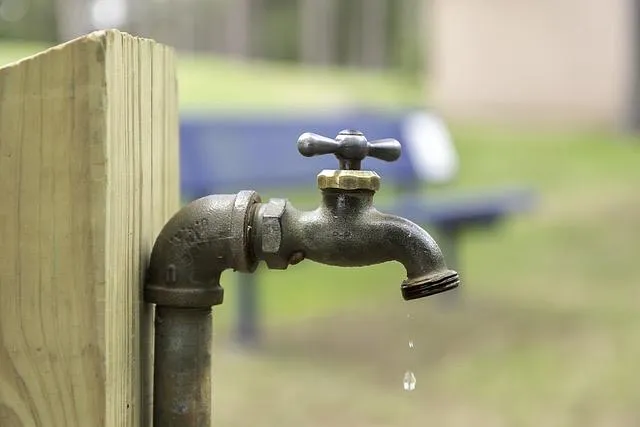BLOG

Where Have All the Cash Flows Gone?

“I’m super excited…”
I imagine we have all received an email that starts this way. I have sent a few myself. Usually, it is followed by some sort of investment opportunity, with projections around various return metrics. It might go on to say something like:
“7% average cash-on-cash return!”
What this typically implies is that over the hold of the asset, say hypothetically 5 years, that cash flow will be returned at an average of 7% per year. Years 1 and 2 are often lower than the average, year 3 is around the average, and years 4 and 5 are hopefully above the average. So it might look something like this:
But where do these projections come from?
Think of cash flow like a series of waterfalls. The water that falls over the first cliff is the max rental income, known in the industry as the Gross Potential Rent, or GPR. As the water continues to cascade down, deductions are made from that max revenue, lowering the cash flow available that flows into the next pool. Things like delinquency (when residents don’t pay rent), concessions (giving a short-term reduction in rent to entice a lease signing), and loss-to-lease (when residents are paying a lower rate than market) are all types of deductions that hit the GPR right off the start.
As the cash flow continues down, it is then hit with all the operating expenses. Things like payroll, marketing, property management fees, property taxes, insurance, repairs, maintenance, and turn over expenses all pull from the cash flow. Once all operating expenses are covered, the remaining cash available is known as the NOI, or Net Operating Income. This is the number we use when determining the value of a property, but that is for another discussion (see the videos here for an in-depth explanation on valuation).
While the waterfall stops here for NOI and property valuation purposes, the cash flow must pass a series of even more pools before it can be considered truly positive and available for distribution. These are considered non-operating expenses and are where the mortgage payments hit as well as any large capital expenditures and asset management fees.
Once all the additional non-operating expenses that fall “below the line” (meaning below the NOI line) are deducted, the true net income is determined. Ideally this number is positive and there is water…or cash…available to flow to the final pool: the investors.
The goal is to increase income and decrease expenses so the waterfall has plentiful cash for the investor pool.
So…where have all the cash flows gone?
There are several factors that have absolutely hammered multifamily cash flows in the past couple years, and the vast majority of them fall on the expense side as revenue has continued to hold steady. Let’s briefly explore five of them.
1. Soaring Insurance Costs: According to a RealPage Market Analytics Report, annualized average insurance premiums for multifamily properties increased 22% year-over-year through the first quarter of 2023, with markets along the gulf coast seeing as high as 46% increases. Insurance is an essential safeguard for property investors, protecting against unforeseen events such as natural disasters, accidents, and liability claims. The frequency and severity of these events have risen (i.e., devastating wildfires, The Great Texas Freeze of 2021, Hurricane Ian in 2022, and now most recently Hurricane Idalia), prompting insurance companies to adjust their premiums accordingly. There are multiple carriers who have even left certain states entirely.
Higher insurance costs can erode apartment cash flow significantly, placing additional financial strain on property owners. Where it was not uncommon to underwrite insurance expenses at $400-$500 per unit in markets like Dallas, right now you’d be lucky to get a policy for under $800 per unit. We have anecdotally heard of some markets on the coast with insurance quotes coming in at over $2,000 PER UNIT! Talk about a deal killer.
2. Increasing Property Taxes: Rising property values, combined with adjustments to tax policies, have led to substantial increases in property tax bills. Property taxes are usually the single biggest expense for multifamily operators. Certain states are gentler here, such as Arizona that limits annual increases to 5%. Others like Texas are brutal, especially depending on the county. According to a 2022 Dallas Business Journal article, certain counties in the Dallas area have seen multifamily appraisals up by an average of 68%. We are even hearing of appraisal valuations coming in higher, sometimes much higher, than recent purchase prices.
It is a foregone conclusion that property tax bills will be protested in areas like this. A specialized law firm is retained, and they dispute the valuation on our behalf. They are usually quite successful in getting the bill lowered at least enough to make it worth the effort. But the bills must be paid until the resolution, which can be months after. And even if the bill is reduced after litigation, the lender will continue to enforce an escrow large enough to cover an inflated tax bill. This continues to chip away at leftover cash flow.
3. Inflated Material and Labor Costs: From maintenance to property management, labor is a crucial component of running an apartment complex. Unfortunately, labor costs have been on the rise due to factors such as minimum wage hikes and increased demand for skilled workers. Hard costs for materials such as flooring, lumber, and fixtures have also seen a jump due to supply chain disruptions. While there has been a slight pullback, these escalating costs are still eating into the cash flows. Where we used to underwrite payroll costs at $900-$1,200 per unit, we now are seeing these costs more in the $1,200-$1,500 per unit range.
4. Rising Interest Rates: It has been just over 17 months since the Fed started raising interest rates. Doesn’t it feel much longer than that?! Since their first hike on March 17, 2022, they have raised the Federal Funds Rate by an unprecedented 5.25%. For those who have floating rate loans, this translates to a significant increase in the mortgage payment.
For those not experienced with lending in the commercial real estate sector, it might be hard to understand why on earth anyone would get a floating rate loan? It really comes down to the business plan, as fixed rate loans can have high prepayment penalties, which will decrease the overall return. Floating debt gives more exit flexibility and according to economist J.P. Conklin at Pensford, floating loans are historically cheaper than fixed. But at the moment it sure doesn’t feel that way. Thankfully we purchase interest rate caps, which leads me to my last point.
5. Additional Escrows for Future Interest Rate Cap: Interest rate caps work just how they sound. They are essentially an insurance policy that limits how high our interest rate can go. The cost for these depends on factors such as loan amount, how many years of cap desired, and what percent you want the cap to be. Because interest rates are currently quite high, at least relative to the last few years, the cost to purchase an interest rate cap has increased over 10-fold. As an example, a 3-year cap purchased in late 2021 for a certain loan cost $170,500. Today that same cap would cost $1,981,000!
While these caps are beneficial and protect us from exposure to higher interest rates, the reason this is hitting end cash flow is because lenders are requiring borrowers to begin escrowing for the purchase of future interest rate caps a year in advance. So if we have a 2-year cap, we will have to start escrowing for the purchase of a year 3 cap at the beginning of year 2. The escrow amount depends largely on the current cap prices, which as you saw are insanely high. When this escrow hits, you can say goodbye to any possible remaining distributable cash flow. The silver lining is that if cap prices come down or you sell/refinance the property prior to needing the cap, you get the unused escrowed funds back.
By now I hope it is clear why many apartment syndicators have paused distributions to investors. The need to preserve capital to weather the current storm is crucial to ensuring a successful and profitable exit. While we are still bullish on multifamily, we are currently in a holding pattern until the turbulence eases a bit.
In the meantime, we are seeing incredible opportunities in other asset classes, such as ATMs, car wash development, self-storage, triple net lease, and mobile home parks. While we aren’t experts in these areas, we are actively building relationships with those who are.
Stay tuned…
On behalf of all of us at Guardian Multifamily, we appreciate you taking the time to further your education and we hope we provided value. Do you have questions about syndications, cash flow management, or anything else real estate related? We’d love to hear from you!

@ Copyright 2023 GDI Partners - All Rights Reserved - Investment opportunities offered by GDI Capital Partners are open to accredited investors only.
@ Copyright 2023 GDI Partners - All Rights Reserved - Investment opportunities offered by GDI Capital Partners are open to accredited investors only.
The contents of this website does not constitute as financial advice or as an offer to sell securities and GDI Capital Partners recommends you speak with an investment professional before making any financial or investment decisions. Any historical returns, expected returns or probability projections may not reflect actual future performance. All securities involve risk and may result in significant losses.
The contents of this website does not constitute as financial advice or as an offer to sell securities and GDI Capital Partners recommends you speak with an investment professional before making any financial or investment decisions. Any historical returns, expected returns or probability projections may not reflect actual future performance. All securities involve risk and may result in significant losses.

